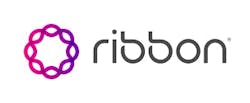Ribbon Communications' Q1 earnings started with a bang: the vendor signed a major Class 5 switch modernization deal with Verizon.
Bruce McClelland, Ribbon CEO, highlighted the Verizon project at the company’s Q1 2024 earnings call.
Through the partnership, Ribbon and Verizon will retire legacy TDM switching platforms and replace their functions with modern cloud-based technologies.
“We’re very excited about this new multi-year program with Verizon,” he said. “It’s an extension of the ongoing work we’ve been doing together, but on a much larger scale. Ribbon will provide both product and professional services to rapidly decommission legacy central office equipment while fully maintaining current services and features. The initial deployment phase of the program will be over the next three years, leveraging our full portfolio of virtual and cloud-native call controllers and session border controllers, advanced analytics, line access, and universal media gateways.”
McClelland said that Ribbon expects to generate over $300 million in revenue over the three years and there is also potential for follow-on programs to continue supporting Verizon.
Focus on relationships, diversification
Turning to first quarter 2024 results, McClelland reported that Ribbon’s strategy of leveraging long-term relationships to diversify and grow business is paying off.
“Profitability improved significantly year-over-year and exceeded the high end of our guidance range with adjusted EBITDA of $12 million,” he said. “We benefited from a favorable mix of sales to customers in the quarter, particularly in the EMEA region, where sales increased 24% as compared to the first quarter last year. The higher sales in EMEA resulted in strong gross margins exceeding 40% in the IP Optical segment as well as the seventh straight quarter of year-over-year sales growth. This includes customers across a number of markets, including service providers, defense, and critical infrastructure.”
McClelland also reported that the gross margin in the Cloud & Edge business was strong in the quarter, primarily due to continued growth in the enterprise market, with product sales increasing 15% year over year.
“This quarter,” he said, “we also continued to increase the software content of our product sales, growing from 25% to 29% year-over-year increasing margins. The continued growth in enterprise has been a key driver behind the higher software sales, improved margins, and solid earnings contribution.”
Overall, company sales in Q1 were at the lower end of Ribbon’s guidance, which McClelland attributed to equipment in transit at the end of the quarter and site readiness delays.
Cloud & Edge and IP Optical growth
Miguel Lopez, Ribbon CFO, provided more details on the company’s financial results.
“We were very pleased with our financial performance in the first quarter as we exceeded the high end of our guidance for gross margins and adjusted EBITDA on strong performance by IP Optical Networks in particular,” said Lopez.
In the first quarter of 2024, the company generated $180 million in revenues, a decrease of 3.5% from the previous year. The non-GAAP gross margin was 55.1%, which is 700 basis points higher than the previous year. Non-GAAP operating expenses were $91 million, a 5% year-over-year improvement, and non-GAAP net loss was negative $1 million, a $2 million improvement from the previous year.
Lopez then addressed specifics for the company’s Cloud & Edge and IP Optical networks segments, noting growth in both.
“The Cloud & Edge business had a strong first quarter non-GAAP gross margin of 66%, up about 500 basis points from the prior year,” he said. “This improvement was driven by an increasing mix of software product sales, which were 68% of total product revenues. The Cloud & Edge business segment continues its steady cash and profit contribution with an adjusted EBITDA of $17 million, or 17% of revenues.”
IP Optical networks also saw growth, with first-quarter revenue of $78 million, an improvement of $6 million or a 9% increase over the prior year.
“Non-GAAP gross margin for IP Optical Networks was 41%, up about 1,400 basis points from the prior year and 27% in the first quarter of 2023,” said Lopez. This resulted in gross profit of $32 million, which is a $12 million or 64% improvement from the previous year, mostly driven by lower product costs and better regional mix from EMEA sales.”
Regarding total company cash flows and capital structure, Lopex reported that cash from operations was $13 million in the quarter.
“That’s now two positive cash flow quarters,” he said. “We used cash in the quarter of $3 million for capital expenditures and our quarterly $5 million term loan repayment. We ended the quarter with $31 million of cash and cash equivalents and increased $4 million from the end of 2023. Our senior term loan balance was at $230 million and the $75 million revolver loan had zero balance outstanding. Per the bank covenant calculations, which include $55 million of our preferred equity and total debt, among other adjustments, we comfortably met both of the term loan covenant metrics in the first quarter.”
Looking forward
McClelland advised that the company’s guidance for the full year remains unchanged.
He said the company expects gross margins to continue to be in the high 30s or better.
In Cloud & Edge, Ribbon expects an improvement in the U.S. Tier 1 service provider environment coupled with growth in enterprise and additional U.S. Federal projects.
"Based on our expectations for the second quarter, we're projecting revenue in a range of $200 million to $210 million, non-GAAP gross margins of 53.5% to 54.5%, and non-GAAP adjusted EBITDA in a range of $20 million to $25 million," he said.
For related articles, visit the Business Topic Center.
For more information on high-speed transmission systems and suppliers, visit the Lightwave Buyer’s Guide.
To stay abreast of fiber network deployments, subscribe to Lightwave’s Service Providers and Datacom/Data Center newsletters.

Hayden Beeson
Hayden Beeson is a writer and editor with over seven years of experience in a variety of industries. Prior to joining Lightwave and Broadband Technology Report, he was the associate editor of Architectural SSL and LEDs Magazine.

